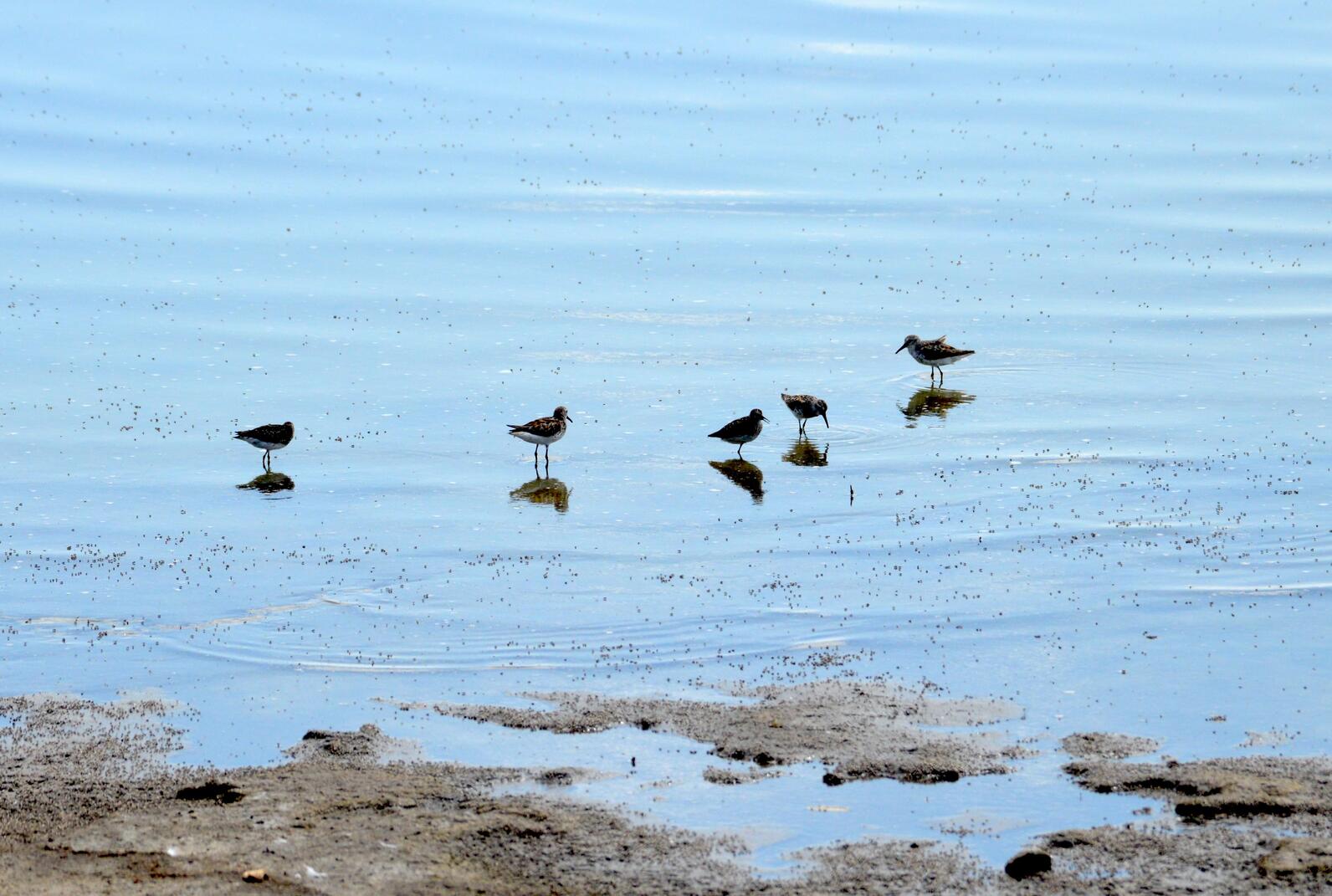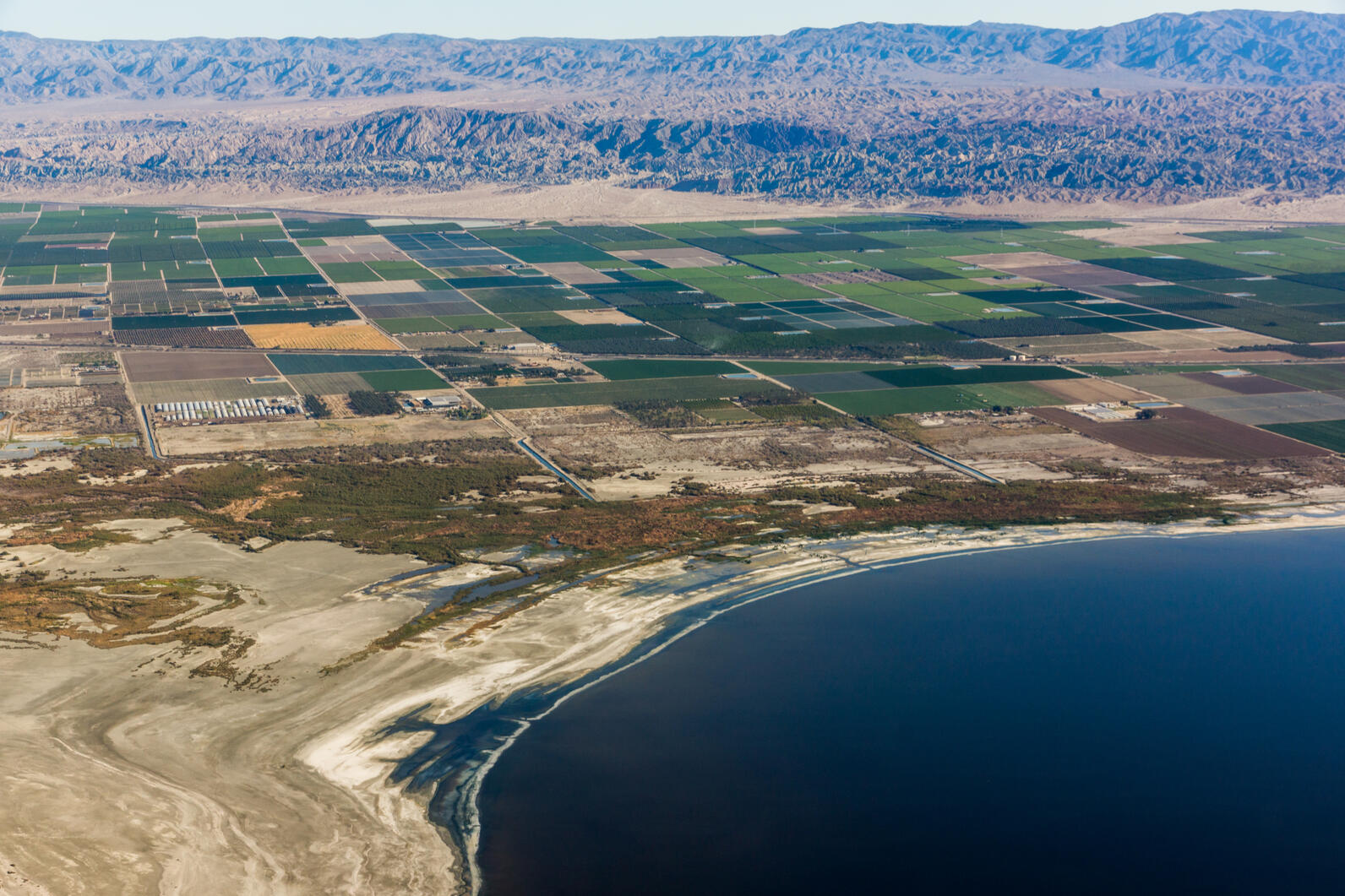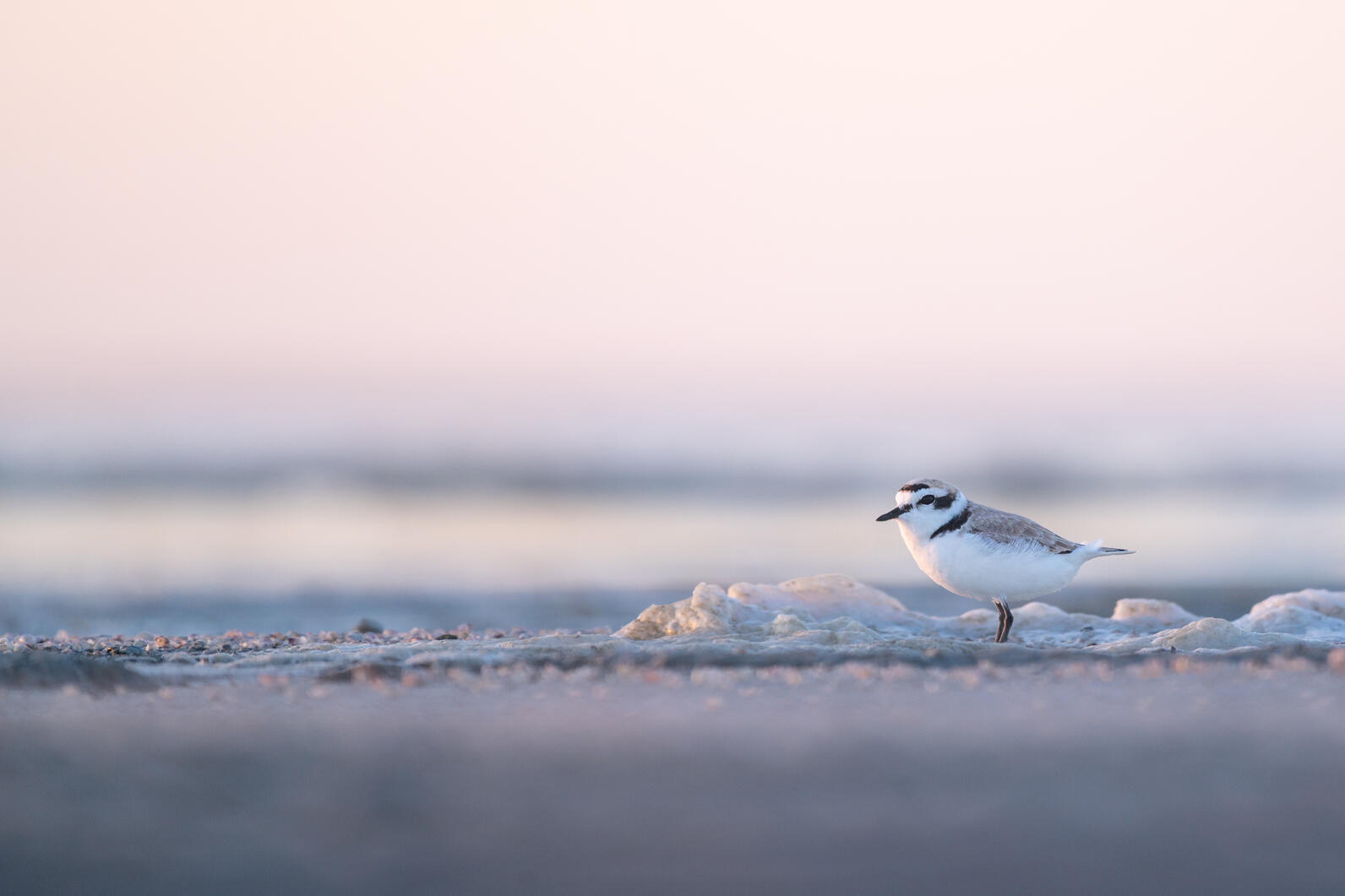My love of shorebirds started several decades ago when I was surveying rare Upland Sandpipers in isolated grasslands in Massachusetts. I marveled at how these birds managed to migrate thousands of miles between their wintering grounds in Argentina and breeding grounds on tiny patches of grassland, mostly on inhospitable airfields, in Massachusetts. Contemplating how they found each other across vast distances and found these strange spots left me with more questions than answers. But I knew two things: we must understand what these remarkable creatures need to survive and we must protect those areas.
Fast forward to a morning in late summer 2023, on the heels of an epic monsoon that hit the Salton Sea region with large bursts of rain, Camila Bautista and I set off on our assigned survey route, near the community of Bombay Beach on the southeastern Salton Sea shoreline. We were there as part of the Intermountain West Shorebird Survey, organized by Audubon California and Point Blue Conservation Science, a seasonal survey where volunteers and staff count shorebirds along the entire shoreline during a single day in peak migration periods. We navigated our way through soupy wet sandbanks, pools of water, and sticky mud, hopping between patches of vegetation and mounds of barnacles along 5 miles of shoreline. We started at sunrise to race against the rising temperatures and were relieved by the day’s cloud cover, which kept temperatures down to a range of almost-tolerable.
With our wide brimmed hats and bags full of water and electrolytes, skin covered to protect against the sun, our survey took hours – both because of the wet conditions and because of the sheer density of shorebirds to count. At first, the counting was easy –the shoreline was scattered with a few Black-necked Stilts and Least Sandpipers. As we approached the edge of the Bombay Beach wetlands, however, both navigating the soil and counting the birds became more challenging and much more exciting. These wetlands, fed by mountain springs and desert washes, collect a lot of fresh water in periods of rain and provide habitat for many waterbird species.
In every direction, and almost around our feet, thousands of tiny shorebirds, no bigger than a few marshmallows, scurried among the mud feeding nonstop, slurping up whatever they were finding in the soupy shore. Dotted here and there were tiny Snowy Plovers, one of the few resident shorebirds that breeds along the Sea’s edges. Most of the birds were Western and Least Sandpipers, newly arrived from their breeding grounds in the Arctic. The Salton Sea is a critical rest stop along the Pacific Flyway for shorebirds, a place to rest and gain more fat, before continuing a long journey to parts south.

Weeks later, as numbers were tallied by Point Blue Conservation Science, we were excited to learn that our efforts contributed to a historic count – more than 250,000 shorebirds were counted that day at the Salton Sea, more than double the number previously counted in the 1990’s. These large numbers led our teams at Audubon California to wonder: Why do shorebirds seem to be flocking to the Salton Sea?
To help answer this question, we hired Marlene Walters, a recent UCLA graduate student, to investigate the sediment where shorebirds are found feeding at the Salton Sea. As the Sea recedes with reduced input of freshwater, more than 6,000 acres of wetlands have emerged in the past 8 years, as the irrigation drains no longer reach the water’s edge and instead spill out onto the dry playa. These areas, where fresh and saltwater mix, are where we are observing the largest numbers of shorebirds. And it led me to wonder what was attracting them to these sites.
In similar conditions, such as coastal estuaries like San Francisco Bay, a substance called biofilm has been documented as a major food resource for small migratory shorebirds. Biofilm is a slimy substance formed by communities of bacteria, algae, and other tiny organisms that accumulates on intertidal sediment surfaces. The recent discovery of biofilm as a major component of the diets of migrating small-bodied shorebirds (e.g., Calidris sp.) on coastal mudflats elucidates these birds’ complex dietary needs, including biofilm.

Marlene chose 3 locations at the Salton Sea known to attract small shorebirds, and in spring, summer, and fall, where birds were observed feeding, we sampled the surface and below-surface sediment, collected the material into vials, and sent the samples off to a lab for DNA analysis. Lab results showed a higher abundance of diatoms, a group of nutritious algal organisms at the feeding locations of sandpipers during spring and fall compared to summer, when fresh water was limited. Many types of diatoms are notable for high quantities of lipids - fatty compounds needed by shorebirds to gain and store fat for their long migrations, making them nutrient-rich food sources for migrating shorebirds. Green algae was also found in summer and fall, and the species found is considered a lipid-rich source of biofuel for shorebirds. The formation of biofilm at intertidal mudflats, where it has been more extensively studied, is driven by spring and fall mixing of salt and fresh water. Our lab analyses suggest that this pattern appears at the Salton Sea as well, where freshwater inflows occur in spring and fall, and dry up in summer.
While further studies are needed to confirm the presence of biofilm in shorebird diets, this initial study suggests that it is important that freshwater inflow to the Salton Sea remains reliable during migration periods to ensure the availability of biofilm as an essential energy source for small-bodied shorebirds. Following confirmation of biofilm ingestion by shorebirds, research can then identify shoreline areas with the highest potential for biofilm production based on inflow and sediment parameters.

As the Sea continues to change with reduced inputs of freshwater, it will be critical to continue studying this food resource and work with State agencies to maintain this vital stopover site for migratory birds. Just as humans need to prepare for intensive exercises by fueling up with carbs, fats, and essential fatty acids, shorebirds need to do the same to prepare for their marathon migrations.
The role of inland saline lakes like the Salton Sea in providing biofilm to migrating birds is a new and intriguing line of inquiry and emphasizes the already dire need to conserve the limited number of stopover habitats suitable for shorebirds. Saline lakes across the interior western U.S. are at risk of ecological collapse as fresh water is diverted away and salinity rises to unhealthy levels. This puts millions of birds already devastated by habitat loss at further risk and exposes human residents to toxic sediments as shorelines recede and form large dust clouds. Maintaining the ecological function of these lakes is essential to both public health and the recovery of migratory bird populations in the western United States.
Read our full study here.






